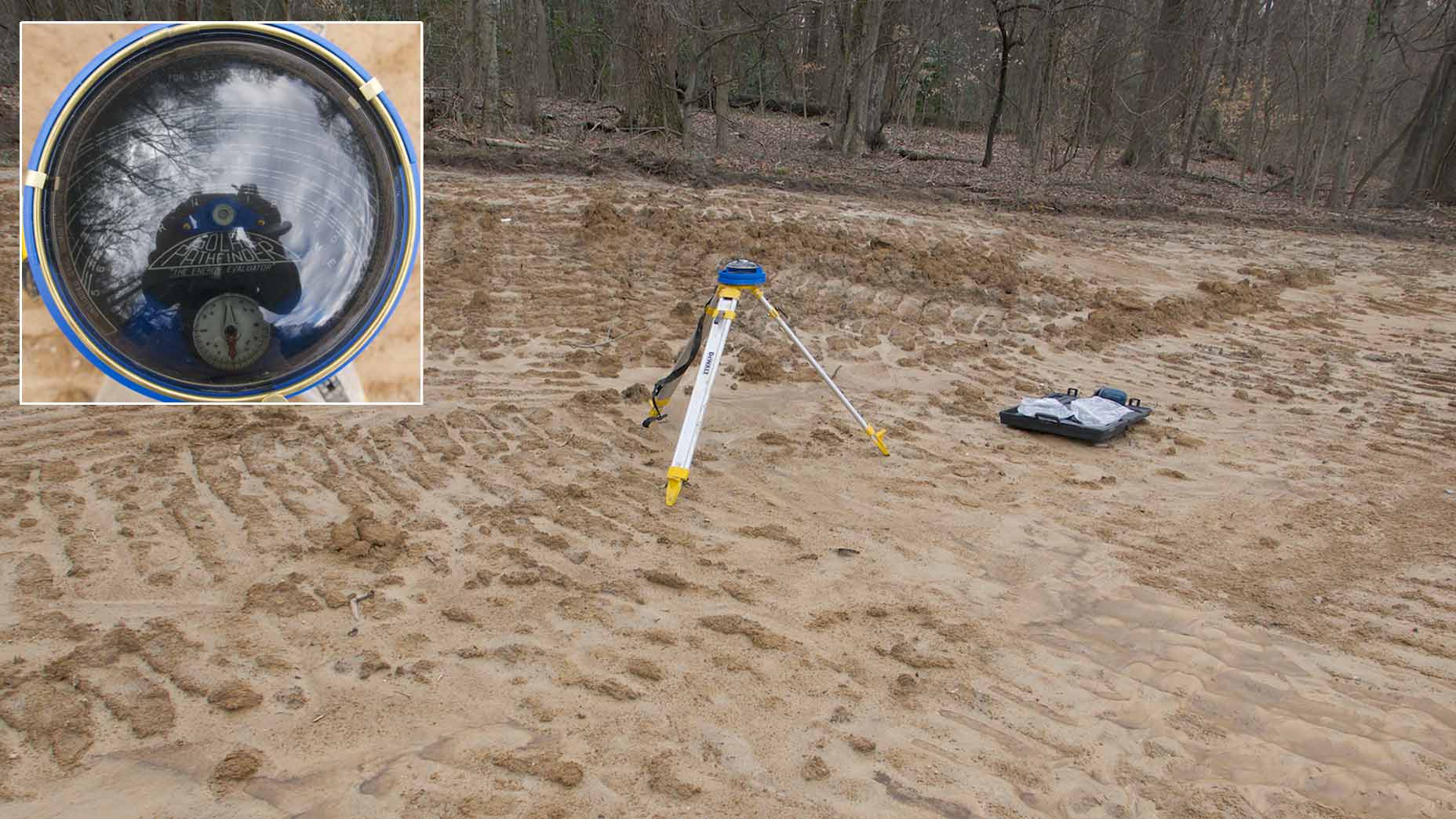Ed note: GOLF contributor and architecture nut Desi Isaacson is cutting his design teeth as an intern for King-Collins Golf on their redesign of Overton Park, a nine-hole muni in Memphis, Tenn. How are courses actually built? What moves are made behind the scenes? Here, in Dirt Diaries, we’ll pull back the curtain on how design decisions come to life.
Previous installments: How drainage pipes are installed | What’s a bury pit?
***
There is a problem. Tad King wants to use Bermuda Mini Verde grass for the greens at Overton Park, but that strain requires eight hours of continuous sunlight during the growing season of April to October. There are trees behind the 3rd green that we aren’t allowed to touch, and now King isn’t sure if the green will get enough sunlight to properly grow.
His predicament: If any sizable section of the 3rd green is shaded during those months, it would be better to use a strand of zoysia grass, which is shade-tolerant. But, because of budgets constraints and other obstacles, options are limited.
Fortunately, we had one piece of technology on our side: the Solar Pathfinder.
The Solar Pathfinder, as defined on its website, is a “tool for determining the most economical and efficient photovoltaic array location and position.” It has other uses, too, and is perfect for determining how much sunlight a specific piece of land will get on average during any month of the year. Bingo.
So King handed a fellow intern and me the gadget and sent us off to solve this 3rd-green riddle. It was a daunting task. We didn’t want to break the device, screw up the process or get inaccurate or false data that could upset the flow of construction and cost extra money. But after a watching a few videos, the Pathfinder turned out to be easy to operate.
There are a few main parts: a transparent dome, a tripod, replaceable sunpath diagrams and a flat panel for the diagram to sit on. The product also comes with wax lead pencils. This is all you need to get started.
First, you make sure the tripod and diagrams are sitting level and facing the correct direction using a compass on the base. Then you place the transparent, convex plastic dome over the diagrams. The dome shows a 360-degree view of the site from the spot you picked. Any obstacle that could block the sun from reaching the diagram will be visible.
After setting it up, the next step was to take the wax pencil and outline the edge of the trees on the diagram. If you want even more accurate data, you can buy software for the device and process the findings on your computer. The magic of the Pathfinder is that in a single usage, it gives you a sunlight reading for the whole year. It works on reflective principle and not shadows.
Because this decision was vital to the long-term survival of the golf course (or so we told ourselves), we did the manual tracing several times and then double-checked our results via the software.
When doing the calculations by hand, you shade in the sections covered by trees. The horizontal arcs represent the different months of the year (although not in order). The vertical lines show daylight hours. There are numbers along the lines; all you need to do is add together the numbers that aren’t shaded out by the trees. This total will be the average percentage of sunlight that area will get during each day that month.
We did the process four or five times for the worrisome spot on the 3rd green, and when we checked our results versus the software, we were pleased with our accuracy. Our results showed the back portion of the green being on the edge of getting just enough sunlight. That gave King pause, so we did the whole process again, this time 10 yards farther up from the original back edge.
Our results were significantly better. At this spot, we could use Bermuda Mini Verde without any concerns — and just like that, we decided to move where we were building the green. Although it shortened the hole slightly from its intended design, it certainly beat the alternative of having to change the grass type for the entire course.
As for us interns, turns out our science experiment will make a lasting impact on the course and its health. And if you ever happen to play the 3rd hole at Overton Park, just remember that the green placement wasn’t by chance. Far from it.
